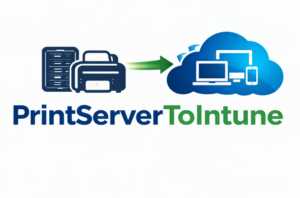PrintServerToIntune – Migrate Printers to Intune as TCP/IP Connections
Overview As much as I dislike printers, many organizations still rely on them. It often becomes a conversation when converting devices to be cloud-native and managed by Intune. My general recommendation is that if there is a large fleet of printers, use a cloud-based printing solution for managing printers. It will be easier to manage […]
PrintServerToIntune – Migrate Printers to Intune as TCP/IP Connections Read More »








